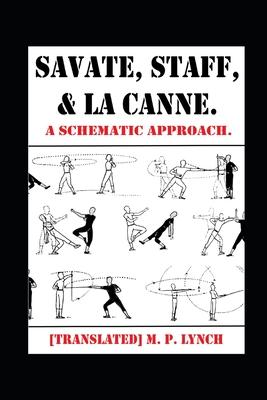If I were to pick one book for a quick and dirty introduction to the French Martial Arts, this would be it. A picture is worth a thousand words, and this is particularly the case when it comes to understanding the subtle movements of the human form in three-dimensional space.
Published in 1929 by the Fdration Gymnastique et Sportive des Patronages de France, this tude Schmatique is your one-stop-shopping work for the study of La Boxe Franaise, La Canne de Combat, and the lesser known staff fighting art of Le Bton Franais.
Savate has gone by many names. Its earliest manifestations are hard to trace - some speak of a violent peasant game played in northern France wherein two opponents would face off in wooden clogs or sabots and, limited to kicking one other beneath the level of the knee, they would use ruses and traps to achieve a leg grab which would send the other fellow backward into the mud. Others contend this "sport" was devised by French soldiers on prison barges off the English coast during the Napoleonic wars. Whatever the origin, it morphed into a weapon for criminals who would throw their boots with enough force to crack a man's tibia or remove his kneecap - at which point they could unburden the helpless mark of his belongings. Then there was the style of kicking art which arose in the south of France known as chausson, which refers to the light slippers worn by French sailors. Grabbing hold of shrouds and stays they would deliver kicks from head to toe both for sport and as a genuine martial art to be used when launching or repelling a boarding party (the Mediterranean port of Marseille remains a Savate powerhouse). Men like Pisseux, Lecour, Leboucher, and of course the great Joseph Charlemont transformed this hodgepodge of techniques into what came to be known as La Boxe Franaise, combining the pragmatic punches of English boxing with the savage kicks of the old French systems. A genuinely practical and modern martial art, French Boxing (which has largely come to be known by its older moniker of Savate around the world) is unique in its use of a shoe - and isn't the average person more likely to encounter hostility in the street while wearing shoes?